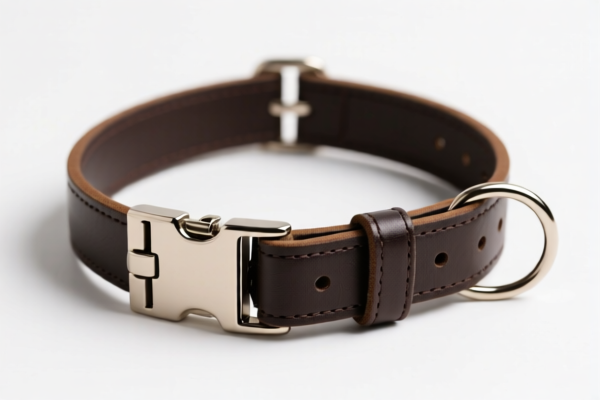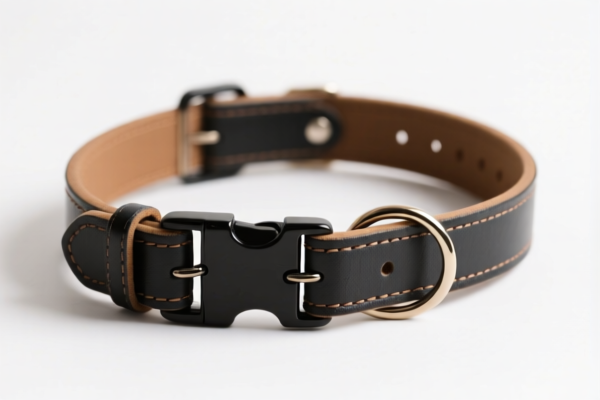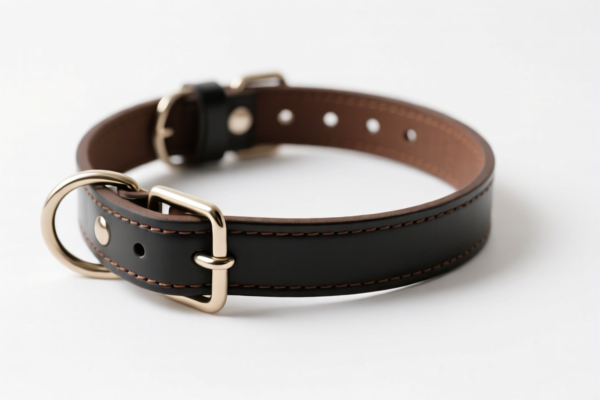| HS Code | Official Doc | Tariff Rate | Origin | Destination | Effective Date |
|---|---|---|---|---|---|
| 6307908500 | Doc | 35.8% | CN | US | 2025-05-12 |
| 6307908500 | Doc | 35.8% | CN | US | 2025-05-12 |
| 6304996040 | Doc | 33.2% | CN | US | 2025-05-12 |
| 8308909000 | Doc | 57.7% | CN | US | 2025-05-12 |
| 8308903000 | Doc | 55.0% | CN | US | 2025-05-12 |
| 7415390000 | Doc | 58.0% | CN | US | 2025-05-12 |
| 7415290000 | Doc | 58.0% | CN | US | 2025-05-12 |
| 6114909070 | Doc | 35.6% | CN | US | 2025-05-12 |
| 4201003000 | Doc | 57.4% | CN | US | 2025-05-12 |
| 4201006000 | Doc | 57.8% | CN | US | 2025-05-12 |
| 4205008000 | Doc | 55.0% | CN | US | 2025-05-12 |




Cat Collar
A cat collar is a collar designed to be worn by cats. While dogs routinely wear collars for identification and leash attachment, cat collars serve a slightly different, though overlapping, purpose.
Material
Cat collars are constructed from a variety of materials, each with its own advantages and disadvantages:
- Nylon: A common, durable, and affordable option. Available in many colors and patterns.
- Polyester: Similar to nylon, often softer and more flexible.
- Leather: More aesthetically pleasing, but typically more expensive and requires more maintenance.
- Breakaway Buckles (Plastic): The most important material consideration for safety. These buckles are designed to release if the collar gets snagged, preventing choking or injury.
- Reflective Material: Often incorporated into the collar for increased visibility in low-light conditions.
- Elastic: Some collars are made entirely of elastic, providing a comfortable fit and easy breakaway.
Purpose
- Identification: The primary purpose is to hold identification tags, including the cat’s name, owner’s contact information, and potentially medical information.
- Safety: Breakaway buckles are crucial for preventing injury if the collar gets caught on something.
- Visibility: Brightly colored or reflective collars help drivers and others see the cat, especially at night.
- Flea & Tick Control: Some collars contain insecticides or repellents to protect against fleas and ticks.
- Fashion: Collars are also used as a decorative accessory.
Function
A cat collar functions as a secure (but safe) attachment point for:
- Identification Tags: Metal or plastic tags with engraved or printed information.
- Bell: A small bell can alert birds and other small animals to the cat’s presence, reducing hunting success. (However, some owners prefer silent collars.)
- GPS Tracker: Some collars are designed to hold GPS tracking devices for locating the cat if it gets lost.
- Microchip Information: While not directly on the collar, the collar often indicates the cat is microchipped.
Usage Scenarios
- Indoor Cats: Collars with identification tags are still recommended for indoor cats in case they escape.
- Outdoor Cats: Essential for identification and safety. Breakaway collars are strongly recommended.
- Supervised Outdoor Activity: Used with leashes for controlled walks or exploration.
- Multi-Cat Households: Different colored collars can help identify individual cats.
Common Types
- Breakaway Collars: The standard safety option, designed to release under pressure.
- Quick-Release Collars: Similar to breakaway collars, but with a manually released buckle.
- Elastic Collars: Made entirely of elastic, providing a comfortable and secure fit with a breakaway feature.
- Flea & Tick Collars: Contain insecticides or repellents. Effectiveness varies.
- Reflective Collars: Incorporate reflective material for increased visibility.
- Personalized Collars: Feature the cat’s name and owner’s contact information directly on the collar.
- Martingale Collars (Limited-Slip Collars): Tighten when the cat pulls, providing a more secure fit without choking, often used for cats with smaller heads. These require careful fitting and are not always recommended for unsupervised cats.
- GPS Collars: Contain a GPS tracking device.
Cat collars fall under the category of saddlery and harness for any animal. Here are the relevant HS codes based on the provided reference material:
-
4201.00.30.00: This HS code covers dog leashes, collars, muzzles, harnesses and similar dog equipment. While specifically mentioning "dog" equipment, it represents a closely related category and could be applicable to cat collars as they serve a similar function.
- 4201: Saddlery and harness for any animal (including traces, leads, knee pads, muzzles, saddle cloths, saddle bags, dog coats and the like), of any material.
- 4201.00: Saddlery and harness for any animal (including traces, leads, knee pads, muzzles, saddle cloths, saddle bags, dog coats and the like), of any material.
- 4201.00.30: Dog leashes, collars, muzzles, harnesses and similar dog equipment.
-
4201.00.60.00: This HS code covers "Other" saddlery and harness for any animal. If the cat collar doesn't fall neatly into the specifically defined "dog equipment" category, this broader classification would be appropriate.
- 4201: Saddlery and harness for any animal (including traces, leads, knee pads, muzzles, saddle cloths, saddle bags, dog coats and the like), of any material.
- 4201.00: Saddlery and harness for any animal (including traces, leads, knee pads, muzzles, saddle cloths, saddle bags, dog coats and the like), of any material.
- 4201.00.60: Other.
Tax Information:
Both HS codes 4201.00.30.00 and 4201.00.60.00 share the following tax details:
- Basic Tariff: 2.4% or 2.8% (depending on the specific code).
- Additional Tariff: 25.0%.
- Tariff after April 2, 2025: 30.0%.
- Total Tariff: 57.4% or 57.8% (depending on the specific code).
Important Note:
The reference material indicates a basic tariff rate of 2.4% for HS code 4201.00.30.00 and 2.8% for HS code 4201.00.60.00. The total tariff will be 57.4% or 57.8% respectively, after considering the additional tariff and the tariff adjustment scheduled for April 2, 2025.
Customer Reviews
No reviews yet.